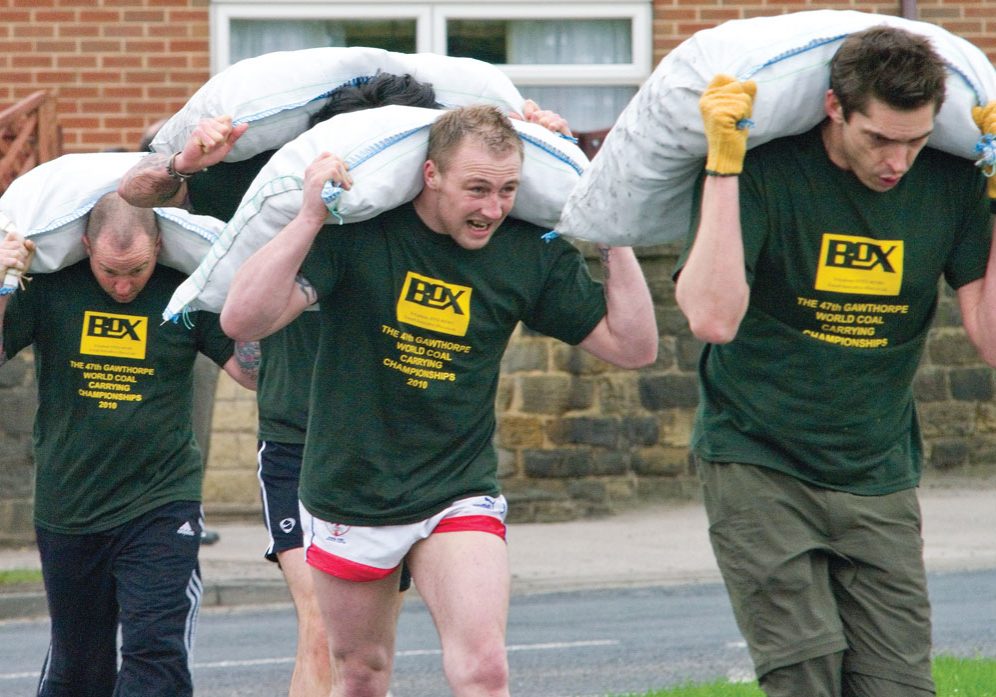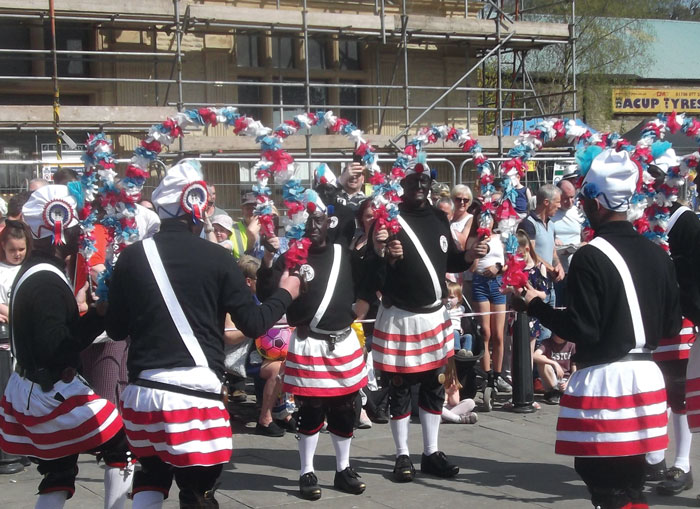
Nutty Northern Easter Traditions
by cdno
JIM COULSON 'EGGS-PLORES' THE BRILLIANT AND BIZARRE NORTHERN EASTER TRADITIONS OF YORKSHIRE AND LANCASHIRE
Up north we love any excuse for a celebration, and Easter is no exception. Or should that be egg-ception? There are a host of different traditions from across Yorkshire and Lancashire that are associated with the big spring festival. Some of them have fallen by the wayside over the course of time, others are still very much evident, and it is time to explore some of them before the big day comes around again. Or should that be eggs-plore?
Egg rolling
Let’s start off with a fairly common occurrence. The great traditions of egg rolling is extremely popular across both Yorkshire and Lancashire. With both counties possessing more than their fair share of substantial hills, that is probably understandable.
All over our patch, you will find regular Easter events(in non-pandemic times, anyway), usually featuring a combination of egg painting and egg rolling. The idea, if you don’t already know, is to hard boil an egg, paint it in bright colours, then chuck it down a hill. The first one to reach the bottom intact wins.
You might even see some people try to roll chocolate eggs too. Top tip – stick the chocolate egg in a clear food bag so all the delicious broken bits of ‘shell’ are kept together for post-rolling snack time.
On Easter Sunday, young men would go about the towns and villages taking buckles from young women’s shoes.
There are often Easter egg rolling events at Scampston Hall near Malton, Fountains Abbey and Cutsworth Hall near Doncaster in Yorkshire, as well as Avenham Park in Preston and Rivington Pike near Chorley in Lancashire. The latter occurs as part of a traditional Good Friday walk, which was started in the 19th century as a way of remembering Jesus suffering on the cross
One note of caution though, it is said that if your egg breaks when you roll it in Lancashire, you have to crush the shell debris completely, or witches use it to make boats. There is no word on what Yorkshire witches like to do with egg shells, however.
Pace egging
 Heptonstall Pace Egg Play – Photo by Craig Shaw
Heptonstall Pace Egg Play – Photo by Craig Shaw
Following on from rolling, another one of these egg-related traditions that have stood the test of time is pace egging. The word ‘pace’ comes from ‘Pacha’, Easter in Latin. It isn’t anything to do with the velocity of the egg travelling down the hill, unfortunately.
Back in the day, the folk of Yorkshire and Lancashire would boil their eggs in onion skins to give them a golden hue, but that has been superseded by painting in more recent times. The idea with pace eggs was to eat them, stick them around the home as ornaments or to give them to the pace eggers who visited the local streets. The page eggers in various towns and villages would dress up as a range of characters including St George, the Noble Youth, the Soldier Brave and Old Tosspot before performing songs and plays for the assembled masses.
You can still see the Pace Egg Play every year in Heptonstall, West Yorkshire. Every Good Friday, a host of amateur actors come together to perform the traditional Mumming Play, which helps to bring vast crowds to the beautiful Calderdale village.
Buckle stealing
One of the more bizarre Easter traditions has roots in Yorkshire, but has now sadly been all but forgotten. On Easter Sunday, young men would go about the towns and villages taking buckles from young women’s shoes. The women would then take the men’s buckles on Easter Monday. On the Wednesday, everyone was reunited with their own buckles, and probably not a moment too soon for those who had spent the previous days falling over in their loose footwear.
There was even a tradition in Ripon in North Yorkshire where locals would take the spurs from horsemen riding through the town. They were only allowed them back if they paid a small sum of money. Sounds a little bit like extortion when you think about it. Or should that be eggs-tortion? In Filey on the Yorkshire coast it was a little different. The men took the ladies’ shoes and the women nabbed the men’s hats. They would then meet at the pub on the Tuesday to retrieve their garments.
 Britannia Coco-nut Dancers of Bacup – Photo by Robert Wade
Britannia Coco-nut Dancers of Bacup – Photo by Robert Wade
The Coco-Nutter’s dance
Every Easter Saturday, a troupe of folk clog dancers called the Nutters dance seven miles through Bacup and the surrounding areas. The tradition has been running since the mid 1800s and sees eight dancers led by a whipper-in.
The Nutters are also known as the Britannia Coco-nut Dancers, due to the wooden nuts worn at their knees, waists and wrists, which are made from the tops of bobbins. The troupe was originally connected to another mill in the town – Tunstead Mill – but shifted to Britannia Mill in the 1920s. Stacksteads Band accompanies the dancing, which takes a regular route around Bacup, where they also collect money for local charities.
Parish swapping
If you ever needed proof that you used to have to make your own fun before Netflix was invented, you just have to look at what two farms used to get up to in South Yorkshire. At midday on one Easter Sunday, they would become part of Mexborough until midday on the next Easter Sunday, when they would join the parish of Wath-Upon-Dearne. This alternated every year, and that must have helped the local councils, who only had to wait until Easter to put off any essential works before they became the other council’s problem.
World Coal Carrying Championship
Many moments of inspiration arrive in the pub, and the World Coal Carrying Championships is just one great example. The story goes that some friends were having a hearty debate over their respective fitness in the Beehive Inn in Gawthorpe near Ossett in West Yorkshire one day in 1963 when the idea of testing their mettle with a coal carrying race came up. The secretary of the Gawthorpe Maypole Committee suggested they tie it in with the village’s Easter celebrations and a new tradition was born.
Nowadays, every Easter Monday, there are men’s and women’s races from the Royal Oak pub to the maypole on the village green, a distance of 1108.25 yards. With £750 up for grabs for the men, who carry 50kg of coal in a sack over their shoulders, and £500 for the women, who carry 20kg, it is a hotly contested event. The current course records are 4 mins 6 seconds for the fellas, held by David Jones of Meltham, and 4 minutes 25 seconds for the women, as achieved by Catherine Foley from Heckmondwike.
There are also a range of children’s races over smaller distances to ensure a day filled with family fun. Truly, an exciting annual event. Or should that be…well, you know..
 Gawthorpe World Coal
Gawthorpe World Coal
Carrying Championships – Photo by Stephen Bowler



